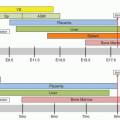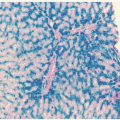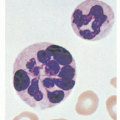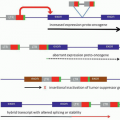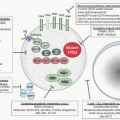rise, however, under conditions of stress such as infection or exogenous epinephrine or corticosteroid administration, perhaps explaining the absence of risk for infection.17 Some cases are associated with the presence of autoantibodies pointing toward an immune mechanism in the pathophysiology of this condition.18, 19 Other cases seem to be the result of abnormal phagocytosis of normal marrow neutrophils by macrophages or the result of T-cell and cytokine-mediated suppression of granulopoiesis in the bone marrow.20, 21 Included in this diagnosis is chronic benign granulocytopenia of infancy and childhood which typically resolves spontaneously around age 4 years.17 Although neutrophil counts do rise in response to G-CSF administration, G-CSF therapy is not recommended given the relatively benign clinical course associated with this condition.22, 23
TABLE 57.1 DIFFERENTIAL DIAGNOSIS AND FEATURES OF CONGENITAL NEUTROPENIA | |||||||||||||||||||||||||||||||||||||||||||||||||||||||||||||||||||
|---|---|---|---|---|---|---|---|---|---|---|---|---|---|---|---|---|---|---|---|---|---|---|---|---|---|---|---|---|---|---|---|---|---|---|---|---|---|---|---|---|---|---|---|---|---|---|---|---|---|---|---|---|---|---|---|---|---|---|---|---|---|---|---|---|---|---|---|
| |||||||||||||||||||||||||||||||||||||||||||||||||||||||||||||||||||
of this rare autosomal recessive syndrome.27 The syndrome was named infantile genetic agranulocytosis, which later was renamed SCN or Kostmann syndrome. Afflicted children suffer from infections that can occur as early as the first months of life and often include omphalitis and perirectal abscesses; otitis media, pneumonia, gingivitis, and urinary tract infections are also common. The diagnosis is usually apparent within the first 3 months of life. Death may occur as a result of septicemia, peritonitis, and enteritis, with fatal infections common in infancy and early childhood. All patients have severe neutropenia with an ANC <0.5 × 109/L, but often <0.2 × 109/L, and there is often an increase in other myeloid cell lines including monocytes and eosinophils. SCN was previously hypothesized to be a result of a deficiency in G-CSF or its receptor but further studies have demonstrated that G-CSF production is not impaired in patients with SCN, G-CSF receptor number and function are normal in patients with SCN, and the administration of G-CSF results in correction of neutropenia and improved clinical outcomes.29, 30, 31, 32, 33 Kostmann’s early studies suggested that intramedullary apoptosis of myeloid precursors was a prominent feature of SCN, and more recent studies have confirmed that accelerated apoptosis is a central defect of this disorder, suggesting that G-CSF functions to correct the phenotype in part through its activity as an antiapoptotic agent.34, 35, 36, 37
TABLE 57.2 DIFFERENTIAL DIAGNOSIS AND FEATURES OF ACQUIRED NEUTROPENIAS | ||||||||||||||||||||||||||||||||||||||||||||||||||||||||||||
|---|---|---|---|---|---|---|---|---|---|---|---|---|---|---|---|---|---|---|---|---|---|---|---|---|---|---|---|---|---|---|---|---|---|---|---|---|---|---|---|---|---|---|---|---|---|---|---|---|---|---|---|---|---|---|---|---|---|---|---|---|
| ||||||||||||||||||||||||||||||||||||||||||||||||||||||||||||
The gene(s) responsible for approximately 40% of SCN, however, remains unknown.40
Stay updated, free articles. Join our Telegram channel

Full access? Get Clinical Tree



